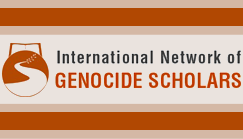Event Title
Expanding Our Understanding of Societal Mechanisms for Genocide Prevention
Submission Type
Panel
Abstract
Not only is it increasingly important to understand how societies are re-building after genocide and mass atrocities, but it is vital to address how other societies are able to build mechanisms to prevent such crimes from occurring in the first place. While impossible to prove a negative, the community of genocide and mass atrocity prevention scholars and practitioners are committed to creating a future inhospitable to mass identity-based violence. Beginning with an overview of the current status of national mechanisms for the prevention of genocide and other mass atrocity crimes, the author explores other current approaches to genocide prevention. This includes various actors in different levels of government, civil society, and private enterprise and across sectors. Through a multi-level structural analysis the author questions a dominant paradigm that state actors are the main players in developing comprehensive tools to address atrocity risk factors. The author concludes with suggestions for a research agenda that examines the dynamics of developing mechanisms, the role of international organizations, and the relationships between state institutions and civil society initiatives and between national and regional mechanisms.
Expanding Our Understanding of Societal Mechanisms for Genocide Prevention
Not only is it increasingly important to understand how societies are re-building after genocide and mass atrocities, but it is vital to address how other societies are able to build mechanisms to prevent such crimes from occurring in the first place. While impossible to prove a negative, the community of genocide and mass atrocity prevention scholars and practitioners are committed to creating a future inhospitable to mass identity-based violence. Beginning with an overview of the current status of national mechanisms for the prevention of genocide and other mass atrocity crimes, the author explores other current approaches to genocide prevention. This includes various actors in different levels of government, civil society, and private enterprise and across sectors. Through a multi-level structural analysis the author questions a dominant paradigm that state actors are the main players in developing comprehensive tools to address atrocity risk factors. The author concludes with suggestions for a research agenda that examines the dynamics of developing mechanisms, the role of international organizations, and the relationships between state institutions and civil society initiatives and between national and regional mechanisms.





Comments
View the agenda item.
View Stephen Capobianco's bio.